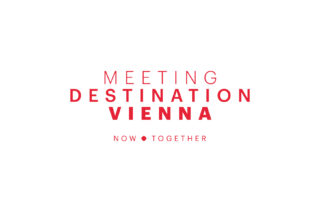Best things
To do in Vienna
Best things
To do in
Vienna
Vienna
Vienna
Vienna, with about two million inhabitants, is situated in the very heart of Europe. Due to its unique geographic location, Vienna has been the setting for many international events and has become a popular conference venue. Vienna hosts one of the United Nations headquarters and is home to a number of other international organizations. Today, Vienna offers historical palaces alongside modern shopping centers, traditional hotels, Austrian food as well as haute cuisine, typical Viennese coffee houses and luxury restaurants, outstanding opera and theatre performances, classical concerts and open-air festivals, antique shops next to elegant boutiques – all joined together in incomparable Viennese harmony.
We assume no liability for the content of linked pages.
Schönbrunn Palace

Schönbrunn Palace, in its present form, was built in the 18th century as a summer residence for Emperor Maria Theresa and is now the main tourist attraction in Vienna. Today, Schönbrunn Palace has 1,441 rooms of various sizes. The Habsburgs resided in the palace for many years and it became the birthplace of many Austrian Emperors. The extravagant palace is designed in a Baroque style. The symmetrical main building displays hundreds of windows and has statues on the rooftop. Inside the palace is an assortment of rooms, fully decorated in the ancient style. The Schönbrunn Palace and the 160-hectare park were added to UNESCO’s World Heritage list in 1996.
The Hofburg Palace

The Hofburg Palace was the residence of the Habsburgs in Vienna from the 13th century to 1918. Since 1945, it has been the official residence of the Austrian Federal President. Over the seven centuries, the Hofburg Palace has grown steadily. Today, the building complex comprises the largest part of the Austrian National Library, various museums, as well as the Hofburg Chapel and the Augustinian Church.
St. Stephen’s Cathedral

The Roman Catholic Cathedral, also called Steffl for short by the Viennese, is Vienna’s landmark and is often referred to as the ”Austrian national shrine”. The Cathedral is located at the Stephansplatz and is considered the most important Austrian church and Gothic building since its construction. The building is 107 meters long and 34 meters wide. St. Stephen’s Cathedral has a total of four towers. The south tower, standing at 136.4 meters, is the tallest tower and dominates the Vienna skyline. Inside the church there are a total of 18 altars, several smaller chapels, and even some tombs and catacombs.
Schönbrunn Gardens

Schönbrunn Palace and its park form an inseparable ensemble. The extensive park surrounds the palace within an area of 160 hectares. The park serves as a place of retreat and relaxation for the Viennese. In the park, numerous interesting sights can be explored on foot as well as on sightseeing tours. Some of the most important sights are the Neptune Fountain, the Gloriette viewing platform in the middle of the park, the Obelisk Fountain, and the Roman Ruin. As well as the Palm House, the Sundial House, the Maze, the Crown Prince Garden and the Japanese Garden.
“Rathaus“ – City Hall

The City Hall is a fine addition to the collection of historical and symbolic architectural buildings in Vienna. The City Hall was constructed in the 19thCentury when in 1850 the area and population of Vienna grew considerably. The building holds five towers, separated in the middle by the iconic Rathausman statue.
Belvedere Museum

The Austrian Gallery, Belvedere, is an important art museum in the Belvedere Palace in Vienna. It houses art from several epochs from the Middle Ages, to the Baroque, and into the 21st century. The Belvedere’s historically grown art collection provides an almost complete overview of the development of Austrian art and thus reflects the history of the country..
Vienna State Opera

The Vienna State Opera is one of the most famous opera houses in the world and is located centrally in the Innere Stadt district. It opened on May 25th, in 1869, with a premiere of Mozart’s Don Giovanni. While the exterior has a Neo-Renaissance style and is characterized by its many arches and arched windows, the interior is grand and reminiscent of a palace.
Vienna Natural History Museum

The Natural History Museum in Vienna is one of the most important natural history museums in the world. Its collection holds around 30 million objects, consisting of minerals, precious stones, meteorites, fossils, animal skeletons, displays of various insects and mammals, and even some taxidermy of extinct species.
Naschmarkt

The Naschmarkt is the city’s largest inner-city market, taking up 2,315 hectares. The Naschmarkt mainly sells fruit, vegetables, pastries, fish, and meat. The market is also known for the range of international goods from countries such as former Yugoslavia, Greece, and Turkey. As well as East Asia, especially Japan and China.
The Spanish Riding School

The Spanish Riding School was originally used for the equestrian training of the imperial family. It is one of the finest institutes for classical dressage in the world. The riding school was established during the Habsburg Monarchy and has remained ever since.



